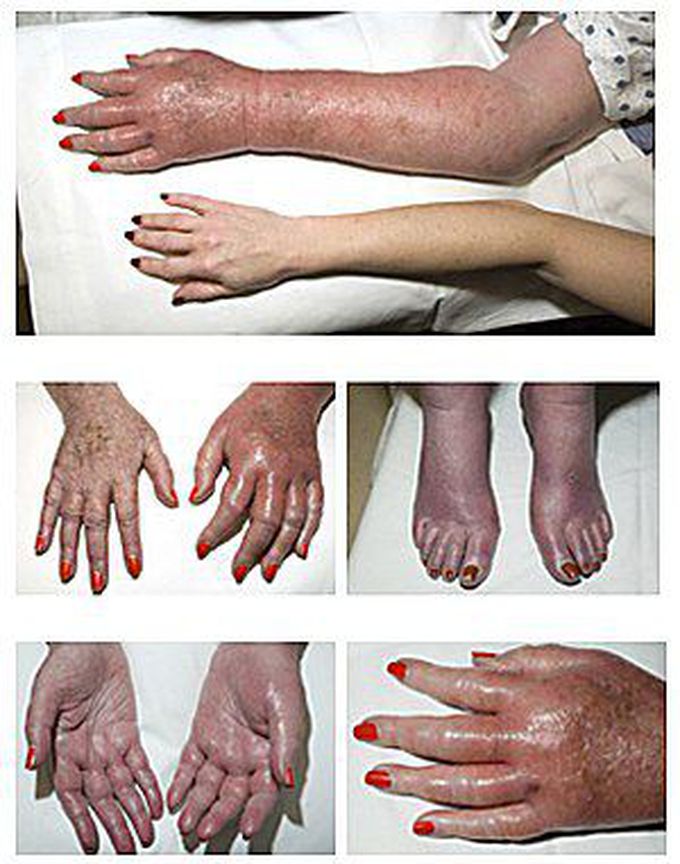


Erythromelalgia
Erythromelalgia, formerly known as Mitchell's disease (after Silas Weir Mitchell), is a rare vascular peripheral pain disorder in which blood vessels, usually in the lower extremities or hands, are episodically blocked (frequently on and off daily), then become hyperemic and inflamed. There is severe burning pain (in the small fiber sensory nerves) and skin redness. The attacks are periodic and are commonly triggered by heat, pressure, mild activity, exertion, insomnia or stress. Erythromelalgia may occur either as a primary or secondary disorder (i.e. a disorder in and of itself or a symptom of another condition). Secondary erythromelalgia can result from small fiber peripheral neuropathy of any cause, polycythemia vera, essential thrombocytosis, [1] hypercholesterolemia, mushroom or mercury poisoning, and some autoimmune disorders. Primary erythromelalgia is caused by mutation of the voltage-gated sodium channel α-subunit gene SCN9A. In 2004 erythromelalgia became the first human disorder in which it has been possible to associate an ion channel mutation with chronic neuropathic pain,[2] when its link to the SCN9A gene was initially published in the Journal of Medical Genetics.[3] Later that year, in an article in The Journal of Neuroscience, Cummins et al., demonstrated, using voltage clamp recordings, that these mutations enhanced the function of NaV1.7 sodium channels, which are preferentially expressed within peripheral neurons.[4] One year later, in an article in Brain, Dib-Hajj et al., demonstrated that NaV1.7 mutants channels, from families with inherited erythromelalgia (IEM), make dorsal root ganglion (DRG, peripheral and sensory), neurons hyper excitable, thereby demonstrating the mechanistic link between these mutations and pain, thereby firmly establishing NaV1.7 gain-of-function mutations as the molecular basis for IEM.[5] Conversely, in December 2006 a University of Cambridge team reported an SCN9A mutation that resulted in a complete lack of pain sensation in a Pakistanistreet performer and some of his family members. He felt no pain, walked on hot coals and stabbed himself to entertain crowds.[6] By 2013, nearly a dozen gain-of-function mutations of NaV1.7 had been linked to IEM.[7]The multi-decades search which identified gene SCN9A as the cause of inherited erythomelalgia is documented in a book by Stephen Waxman, Chasing Men on Fire: The Story of the Search for a Pain Gene.[8]

